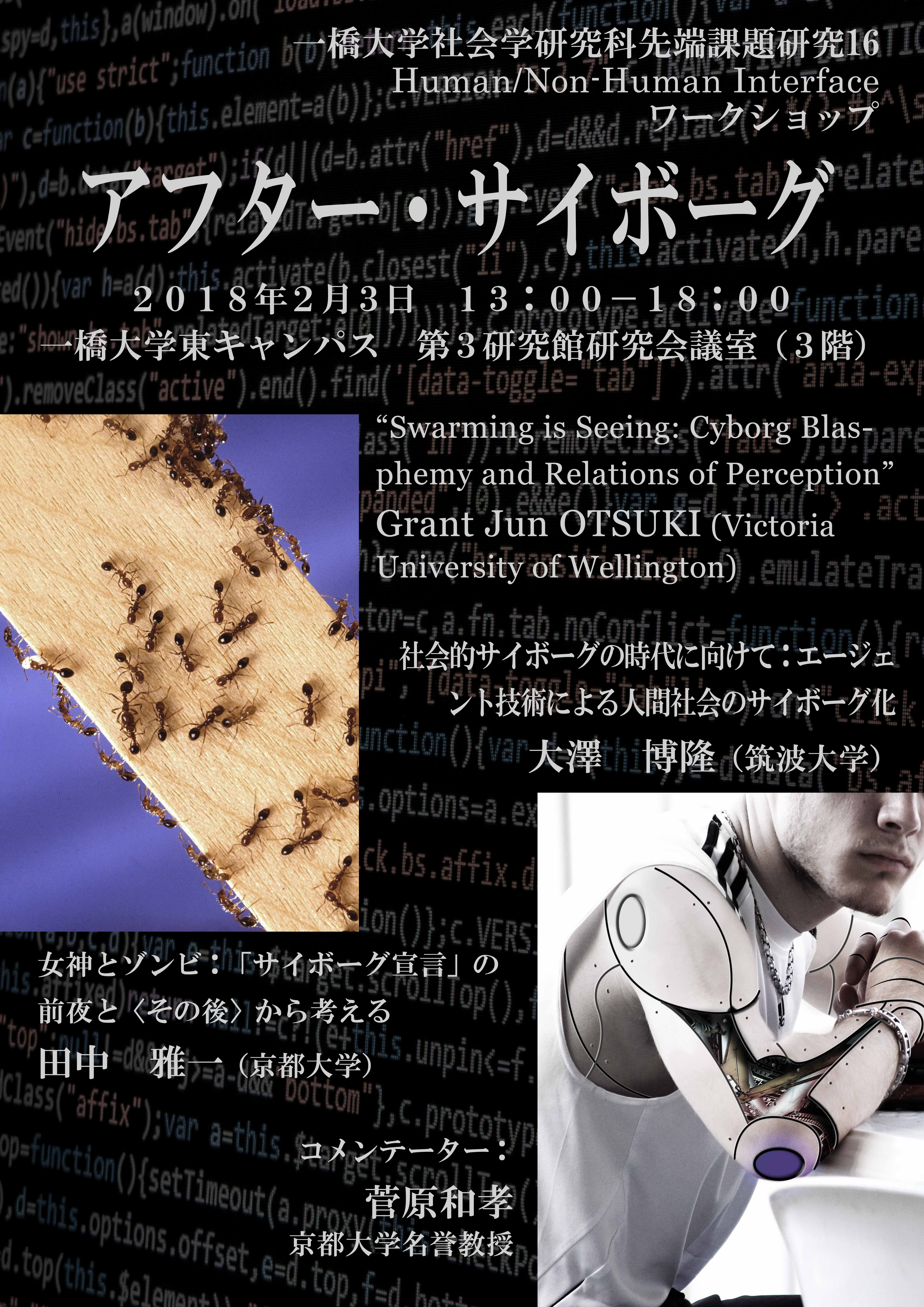登壇者と発表要旨の紹介
*所属はワークショップ当時のもの
#Grant Jun Otsuki
School of Humanities and Social Sciences, Victoria University of Wellington
論題:“Swarming is Seeing: Cyborg Blasphemy and Relations of Perception”
要旨:What remains after the cyborg is the call to read our cultures carefully, critically, and most of all, blasphemously. Haraway’s original Manifesto highlighted how the cyborg emerged from a blasphemous reading of Cold War military technology and culture to generate new anti-essentialist feminist political subjectivities. In the contemporary moment, the swarm and the crowd have captured how many think about human and non- human behaviors. They seek to exploit swarms’ decentralized, adaptive, and emergent behaviors to challenge top-down structures of power for transformative ends. How might swarms be read blasphemously? In this paper, I use studies of ant behavior and human perception as a point of departure to see swarms not simply as an emergent mode of social organization, but also as a form of perceptual embodiment. To swarm is to see in a specific way. I thus explore how changes in how humans perceive the world might simultaneously be technologies of and potentially against swarms.
大澤 博隆
筑波大学 システム情報系知能機能工学域 助教
論題「社会的サイボーグの時代に向けて:エージェント技術による人間社会のサイボーグ化」
要旨:スマートスピーカーやSNS上のソーシャルボットのように、人間から見たときに、他者性のある存在として働き、人間社会 に介入する情報システムが、我々の周りに徐々に整備されつつある。このようなシステムと人間とのインタラクションを扱う学問が、ヒューマンエージェントインタラクション(HAI)と呼ばれている。HAI技術は人間の頭脳労働の代替の域を超え て、人間の感情労働の領域に介入しつつある。人の間に介在し、社会的なチャンネルに働きかけて人の行動を変える、こうしたエージェント技術は、我々自身の能力を高めるサイボーグ化技術ではなく、我々の社会の能力を高めるサイボーグ化技術であると考えられる。本発表ではこの観点から、近年のエージェント技術の方向をまとめ、我々の社会の将来像について論じたい。
田中 雅一
京都大学人文科学研究所 教授
論題「女神とゾンビ:『サイボーグ宣言』の前夜と<その後>」
要旨:「サイボーグ宣言」は「どうせなら私は女神ではなく、サイボーグとしてスパイラル・ダンスを踊りたい」という文章で結ばれている。ここでハラウェーが 念頭に置いているのはスターホークである。他方、「サイボーグ宣言」の4半世紀後に公刊された「ゾンビ宣言」はハラウェーに対する批判の書であるが、 はたして著者たちは「女神でもサイボーグでもなく、ゾンビとしてスパイラル・ダンスを踊りたい」と主張しているのだろうか。また、同時代を批判的に検討 するとき、われわれはどこまでnon-human(批判的文化人類学における異文 化と言える)という外部を必要とするのか。こうした問題について考えたい。
菅原 和孝
京都大学 名誉教授
コメンテイター

